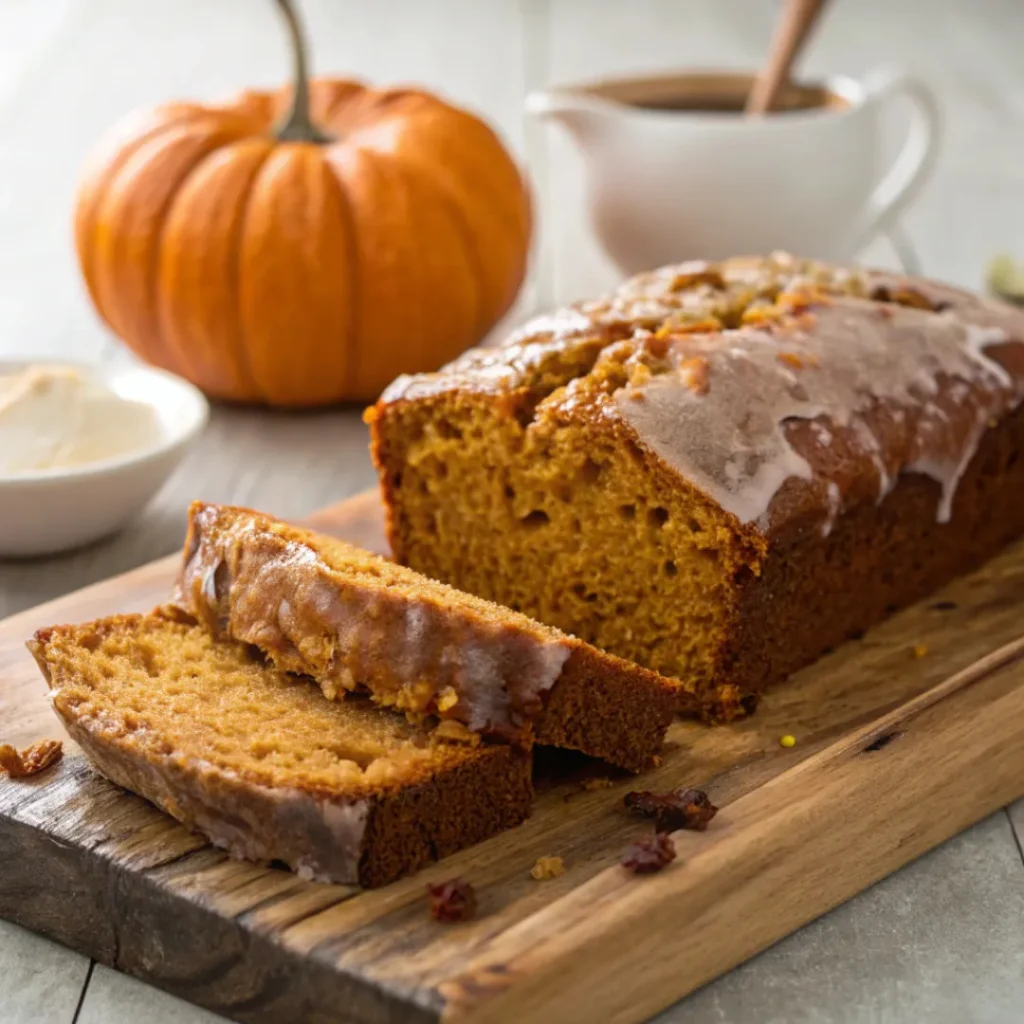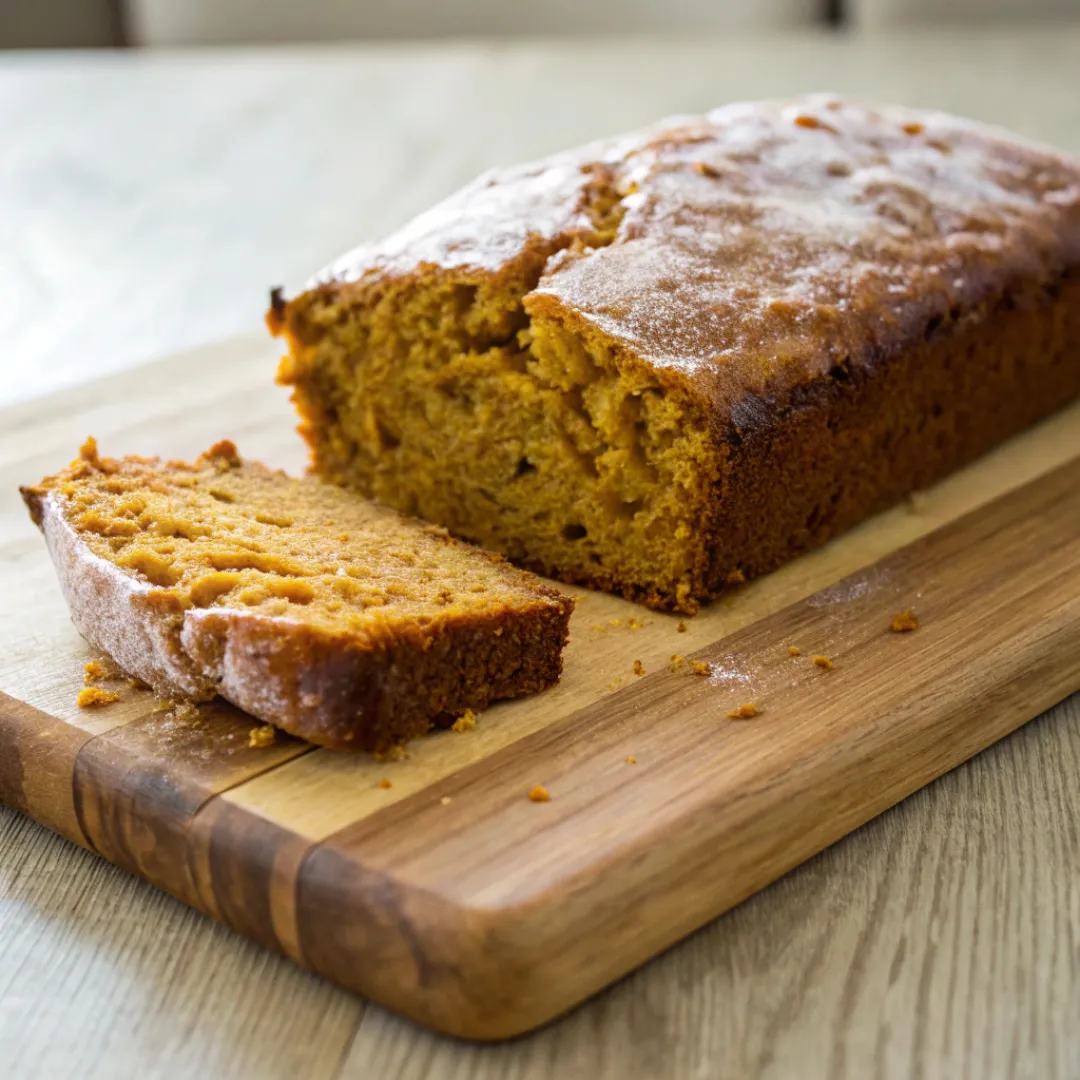Pumpkin bread is a beloved fall favorite that fills the home with a warm, comforting aroma. It’s the perfect blend of spices, sweetness, and pumpkin flavor, making it an irresistible treat. However, one common issue many bakers face is ending up with pumpkin bread that turns out gooey instead of soft, moist, and fluffy. If you’ve ever wondered, “Why is my pumpkin bread gooey?” you’re not alone. A gooey loaf can be disappointing, especially when you expect that perfect slice to enjoy with your morning coffee or tea.
In this comprehensive guide, we’ll dive into the possible reasons why your pumpkin bread might be turning out gooey and provide practical solutions to help you achieve the perfect loaf every time. By the end of this article, you’ll be equipped with tips and tricks to ensure your pumpkin bread comes out perfectly baked, flavorful, and just right.
Why Is My Pumpkin Bread Gooey?
There are several reasons why your pumpkin bread might end up gooey in the middle or overall. Understanding these causes can help you adjust your baking process and achieve the perfect texture. Here are the most common reasons:

Underbaking
One of the most common reasons for gooey pumpkin bread is underbaking. When bread hasn’t been baked long enough, it won’t set properly, leading to a wet, gooey center that feels more like raw batter than a finished product.
Solution
Ensure that your pumpkin bread bakes for the recommended time, usually around 50 to 70 minutes at 350°F (175°C). Every oven is different, so check your bread’s doneness by inserting a toothpick or skewer into the center. If it comes out clean or with a few crumbs, the bread is done. If it has wet batter, bake for an additional 5–10 minutes and check again. Remember, you may need to adjust the baking time slightly depending on your oven’s efficiency.
Incorrect Oven Temperature
Baking at the wrong temperature can cause your pumpkin bread to cook unevenly. If your oven runs too hot, the outer layer of the bread might bake quickly while the inside remains raw and gooey. On the other hand, a cooler temperature might prevent the bread from fully baking through.
Solution
Always preheat your oven to the correct temperature before baking. Invest in an oven thermometer to monitor the internal temperature, as many ovens can be inaccurate. To gain a deeper understanding of how oven temperature affects your baking results, check out this guide Understanding Baking Temperatures.
Too Much Moisture in the Batter
Pumpkin puree adds a lot of moisture to the batter, which can cause your bread to become gooey if there’s too much liquid in the mix. This issue is often exacerbated if the recipe includes other wet ingredients like eggs, milk, or oil. If the batter is too watery, the bread might not be able to set properly, resulting in a gooey texture.
Solution
Be sure to measure your ingredients accurately. If your pumpkin puree is particularly watery, consider draining it through a fine-mesh sieve or cheesecloth before adding it to the batter. You can also slightly reduce the amount of other liquid ingredients or add an extra tablespoon or two of flour to absorb the moisture. Remember, adding more flour helps achieve the right balance between wet and dry ingredients, ensuring a perfectly baked loaf.
Too Much Pumpkin Puree
While pumpkin puree gives your bread its signature flavor and moisture, using too much can make the bread dense, gooey, and even cause it to sink in the middle. Extra pumpkin puree can overwhelm the batter, making it difficult for the bread to cook through.
Solution
Stick to the exact amount of pumpkin puree specified in the recipe. If you want to experiment with different levels of moisture, try reducing the puree by about ¼ cup to see if that improves the bread’s texture. If you’re using homemade pumpkin puree, be sure to measure carefully, as it can have more moisture than store-bought varieties.
Overmixing the Batter
Overmixing the batter can develop too much gluten, resulting in a dense, gummy texture that prevents the bread from rising properly. This not only affects the texture but can also lead to a gooey consistency inside.
Solution
Mix the batter until the ingredients are just combined. A few lumps are perfectly fine, as they will disappear during baking. Use a gentle hand when folding the wet and dry ingredients together, and avoid using an electric mixer for this step. Mixing by hand with a spatula is ideal for achieving the right texture.
Using the Wrong Type of Flour
The type of flour you use can significantly impact the texture of your pumpkin bread. All-purpose flour is ideal, but using cake flour or flour with a lower protein content can lead to a wetter, gooier bread that doesn’t rise properly.
Solution
Stick to using all-purpose flour unless the recipe specifically calls for a different type. If you want a lighter texture, you can substitute a small portion of the all-purpose flour with cake flour, but make sure not to overdo it. This ensures that your bread has the right structure and texture.
Not Allowing the Bread to Cool Properly
Sometimes, pumpkin bread may seem gooey when it’s fresh out of the oven, but it will firm up as it cools. Cutting into the bread before it has cooled completely can cause it to appear underbaked and gooey.
Solution
Allow your pumpkin bread to cool in the pan for about 10–15 minutes before transferring it to a wire rack to cool completely. This helps the bread set and develop the right texture. Let it cool for at least 30 minutes before slicing to avoid a sticky, gooey interior.
How to Avoid Gooey Pumpkin Bread
Now that you understand the causes, let’s look at some pro tips for avoiding gooey pumpkin bread:

Measure Ingredients Accurately
Accurate measurements are crucial for baking success. Use measuring cups and spoons for dry ingredients and a liquid measuring cup for wet ingredients. For even more precision, consider using a kitchen scale. This ensures you have the correct balance of wet and dry ingredients, which helps prevent a gooey loaf.
Adjust Baking Time for Different Pan Sizes
The size and shape of your baking pan can affect the baking time. A larger loaf pan will require more time, while a smaller one will bake faster. Adjust your baking time accordingly, and always check for doneness.
Tip: If you’re interested in how temperature impacts cooking, you might also find this guide on how long to grill chicken at 400 on a pellet grill helpful. Understanding how heat affects different cooking methods can help you become a more precise and effective cook or baker.
Use Room Temperature Ingredients
Using eggs, butter, and other ingredients at room temperature ensures they blend more evenly into the batter, resulting in a smoother, more consistent texture. Cold ingredients can cause uneven baking and lead to a gooey center, as they take longer to warm up in the oven.
Avoid Opening the Oven Door Too Often
Resist the urge to check your pumpkin bread frequently by opening the oven door, as this can cause temperature fluctuations and result in uneven baking. Each time you open the door, heat escapes, which can extend the baking time and affect the bread’s texture. Use the oven light to check on your bread instead.
Use a Combination of Leavening Agents
Using both baking powder and baking soda in your recipe can help your pumpkin bread rise evenly and bake more thoroughly. This combination allows the bread to develop a lighter texture and prevents it from becoming dense and gooey.
Tip: Ensure your leavening agents are fresh and not expired, as old baking powder or baking soda won’t have the same rising effect.
Check the Position of Your Oven Rack
Bake your pumpkin bread on the middle rack of the oven. This ensures even heat distribution, allowing the bread to bake thoroughly without becoming too dry or gooey. Baking too close to the top or bottom can cause uneven baking.
Add a Streusel Topping
Adding a streusel topping made of flour, sugar, and butter can help absorb some of the moisture from the bread, giving it a more defined crust and preventing a gooey top. The streusel topping also adds a delightful crunch and sweetness, enhancing the overall flavor.
Store Pumpkin Bread Properly
How you store pumpkin bread can affect its texture. If you wrap it while it’s still warm, the trapped moisture can make it gooey. Always let the bread cool completely before wrapping it in plastic wrap or aluminum foil.
Frequently Asked Questions
Can I fix gooey pumpkin bread after it’s baked?
Yes, if your pumpkin bread is underbaked, you can place it back in the oven at 325°F (163°C) for 10–15 minutes. Cover it with aluminum foil to prevent the top from overbrowning while the inside continues to bake.
How do I know when my pumpkin bread is fully baked?
Insert a toothpick or skewer into the center of the bread. If it comes out clean or with a few dry crumbs, your bread is fully baked. If it comes out with wet batter, bake it for a few more minutes and test again.
Can I use fresh pumpkin instead of canned pumpkin puree?
Yes, you can use fresh pumpkin puree, but it tends to be more watery than canned puree. Be sure to drain the excess liquid before adding it to your batter to avoid making your bread too moist or gooey.
How should I store my pumpkin bread to prevent it from becoming gooey?
Allow your pumpkin bread to cool completely before storing it in an airtight container. Store it at room temperature for up to 3 days or refrigerate it for up to a week. If you’re storing it in the refrigerator, wrap it in plastic wrap to prevent it from drying out.
Why does my pumpkin bread sink in the middle?
Pumpkin bread can sink if it’s underbaked, if there’s too much moisture in the batter, or if you’ve opened the oven door too often while baking. Make sure to bake it for the full recommended time, use the correct amount of ingredients, and avoid disturbing the baking process.
Conclusion
Gooey pumpkin bread can be a frustrating baking problem, but with a little knowledge and the right techniques, you can easily avoid this issue. By understanding the common causes—such as underbaking, too much moisture, or incorrect oven temperatures—and following our tips, you can achieve perfectly baked, moist, and delicious pumpkin bread every time.
Remember, baking is a learning process, and it’s okay to experiment with different methods to find what works best for you. With these tips in mind, you’ll be well on your way to mastering the art of baking the perfect pumpkin bread.

